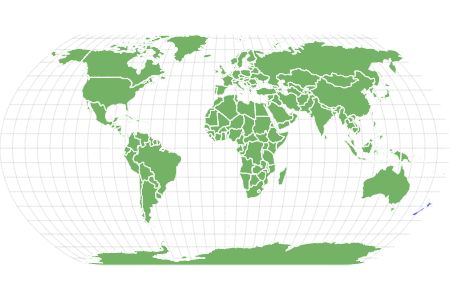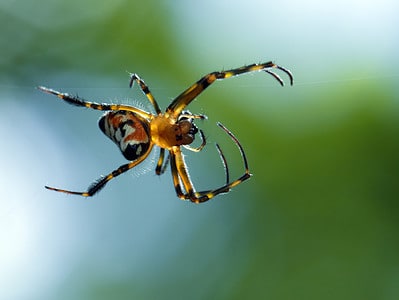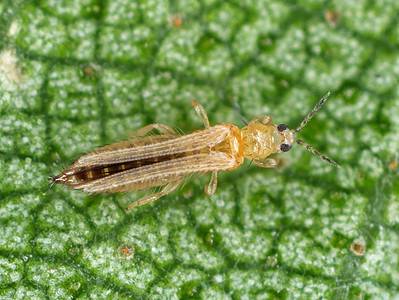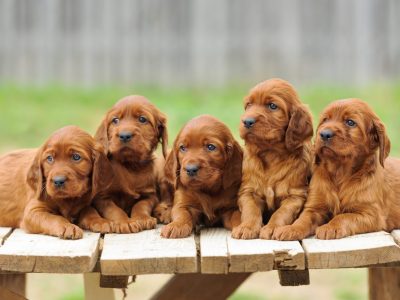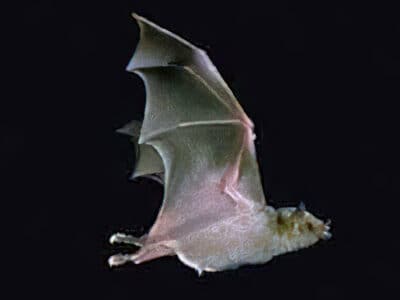There are 3 different species!
Advertisement
Rockhopper Penguin Scientific Classification
- Kingdom
- Animalia
- Phylum
- Chordata
- Class
- Aves
- Order
- Sphenisciformes
- Family
- Spheniscidae
- Genus
- Eudyptes
- Scientific Name
- Eudyptes chrysocome
Read our Complete Guide to Classification of Animals.
Rockhopper Penguin Conservation Status
Rockhopper Penguin Facts
- Main Prey
- Krill, Fish, Shrimp
- Distinctive Feature
- Red beaks and eyes, with yellow head feathers
- Habitat
- Rocky Antarctic Islands
- Predators
- Leopard Seal, Killer Whale, Sharks
- Diet
- Carnivore
View all of the Rockhopper Penguin images!
The smallest crested penguins.
Rockhopper penguins are a breed of penguin that live off of island coastlines in the southern hemisphere. They are one of the smallest species of penguins and are best known for their crest of long yellow feathers, as well as their bright red eyes. Rockhopper penguins are among the most numerous penguin species on Earth.
Incredible Rockhopper Penguin Facts!
- Some scientists split these penguins into three species (southern, northern, and eastern), while others consider them one species.
- They are known for their bright red eyes and bright yellow head plumage.
- They can dive up to 330ft in search of prey at sea.
- Rockhopper penguins mate for life.
- These penguins are found all around the southern hemisphere, from the southern coast of South America all the way to New Zealand.
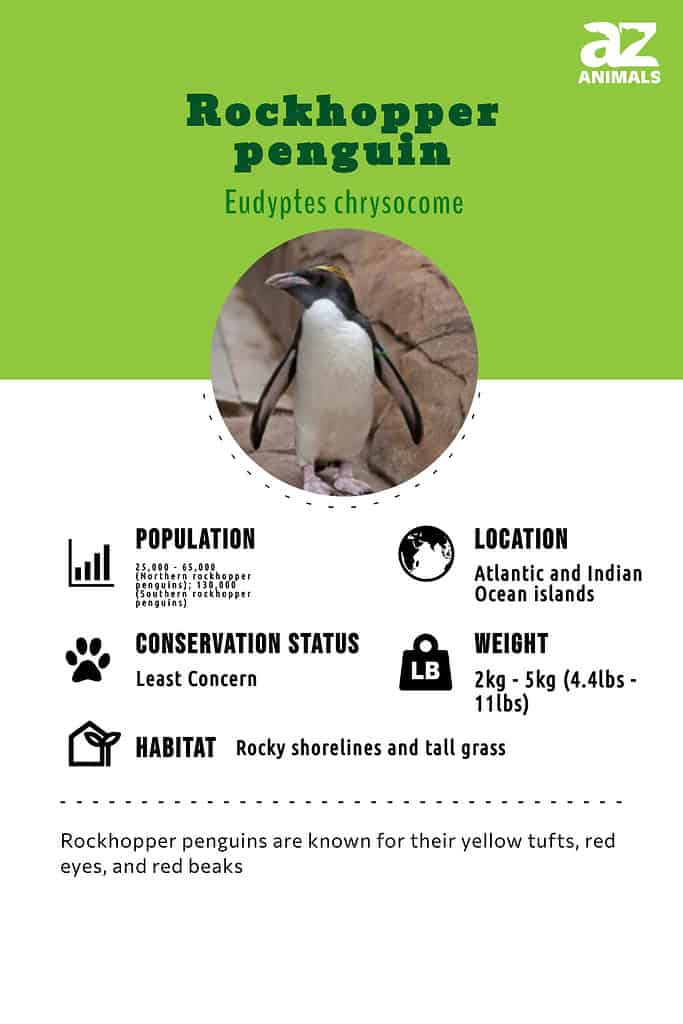
Scientific Name
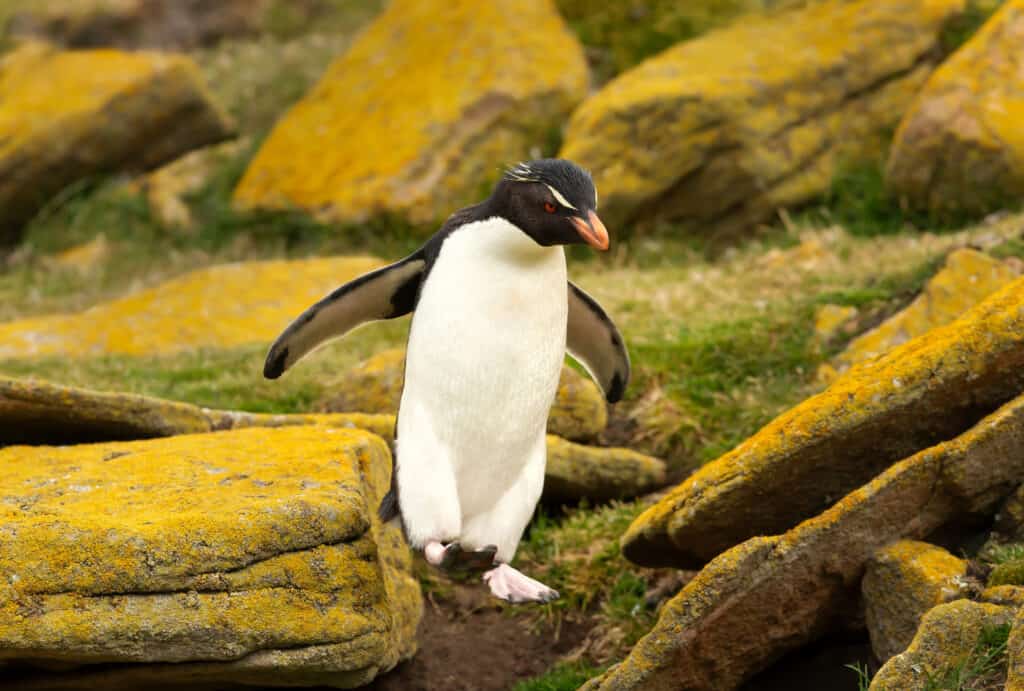
Rockhopper penguins’ closest living relatives are yellow-eyed penguins
©iStock.com/Dgwildlife
The rockhopper penguin’s scientific name is Eudyptes chrysocome. Eudyptes means “good diver” in Latin, and the genus encompasses all the crested penguins, such as the macaroni penguin and the royal penguin. Chrysocome means “golden hair,” so the scientific name of these penguins means “golden-haired divers.”
Some scientists consider the rockhopper penguin to be one species of crested penguin . Other scientists divide the species up into three subspecies: Northern rockhopper penguin, southern rockhopper penguin, and eastern rockhopper penguin. Northern rockhopper penguins tend to be larger than the other two subspecies.
Evolution and Classification
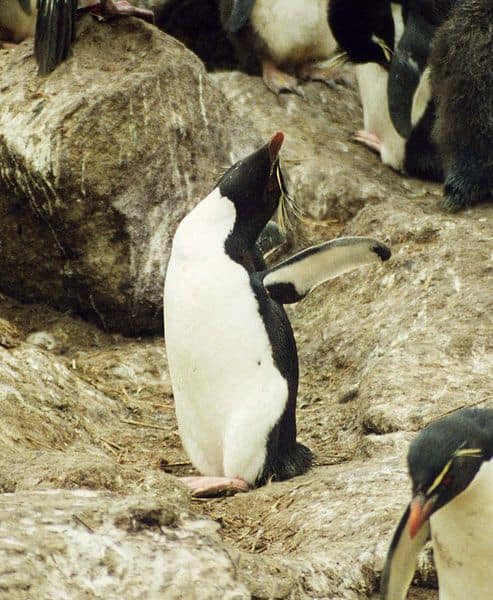
Rockhopper Penguins diverged from yellow-eyed penguins 15 million years ago
©Stan Shebs, CC BY-SA 3.0, via Wikimedia Commons – License
Rockhopper penguins belong to the genus Eudyptes. Each one of its seven member species is known for their black and white coloring, red beaks, and yellow tufts. They are also known for having a wider variety of calls compared to other penguin species.
The yellow-eyed penguin happens to be their closest relative from which they separated during the Mid-Miocene, about 15 million years ago. Seven million years following that first separation, the genus separated into several different species.
Extant member species of the genus include the following:
- Erect-crested penguin (Eudyptes sclateri)
- Fiordland penguin (Eudyptes pachyrhynchusi)
- Macaroni penguin (Eudyptes chrysolophus)
- Royal penguin (Eudyptes schlegelii)
- Northern rockhopper penguin (Eudyptes moseleyi)
- Southern rockhopper penguin (Eudyptes chrysocomei)
- Eastern rockhopper penguin (Eudyptes (chrysocome) filholi)
- Western rockhopper penguin (Eudyptes (chrysocome) chrysocome)
- Snares penguin (Eudyptes robustusi)
Types
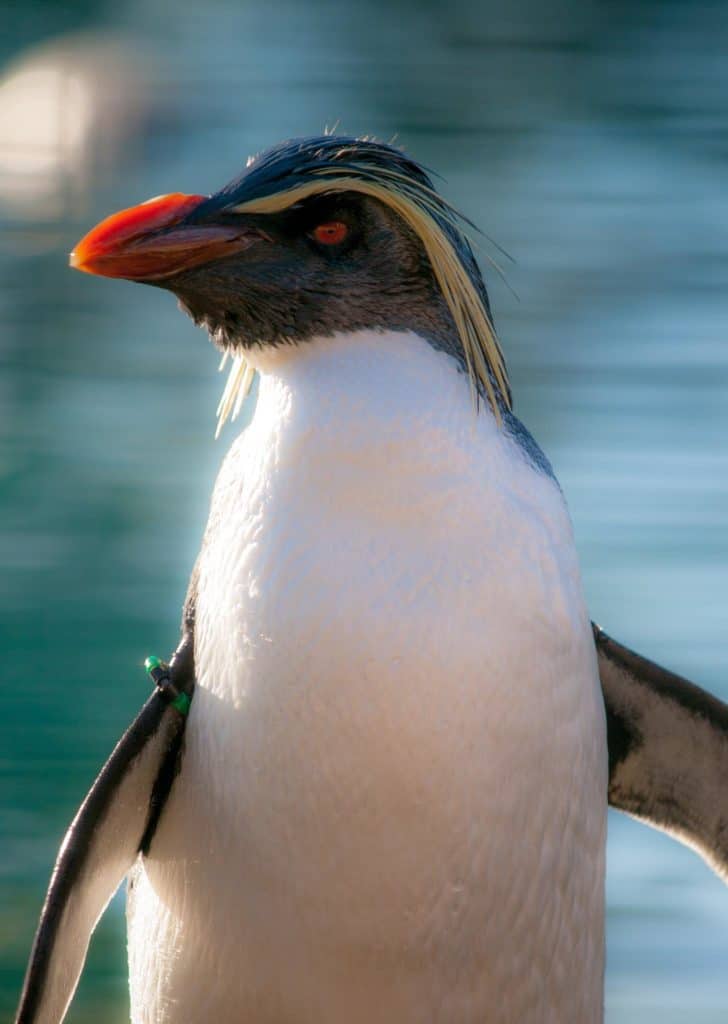
There are two main subspecies of rockhopper penguin
©William Warby (wwarby) / CC BY 2.0, Flickr – License
The key differences between both subspecies of rockhopper penguin includes their sizes, their breeding grounds, their parasites, as well as their mating rituals.
- Northern rockhopper penguins (Eudyptes moseleyi): Larger than their southern relatives, these marine avians play unwitting hosts to Austrogoniodes concii parasites (a fact which proved handy in enabling scientists to be able to tell the difference between them and their southern relatives). Their breeding colonies are located on Amsterdam Island and St Paul Island in the Indian Ocean and Tristan da Cunha and Gough Island in the Atlantic Ocean.
- Southern rockhopper penguins (Eudyptes chrysocomei): The smaller avian subspecies, these penguins are capable of growing to 23 inches and 7.5 lbs — certain heavyweights are however capable of tipping the scales at 9.9 lbs. They provide sustenance to Austrogoniodes keleri lice and breed on the Falkland Islands as well as islands close to Patagonia. Other breeding grounds include the Antipodes Islands, the Auckland Islands, the Crozet Islands, and the Kerguelen Islands.
Appearance
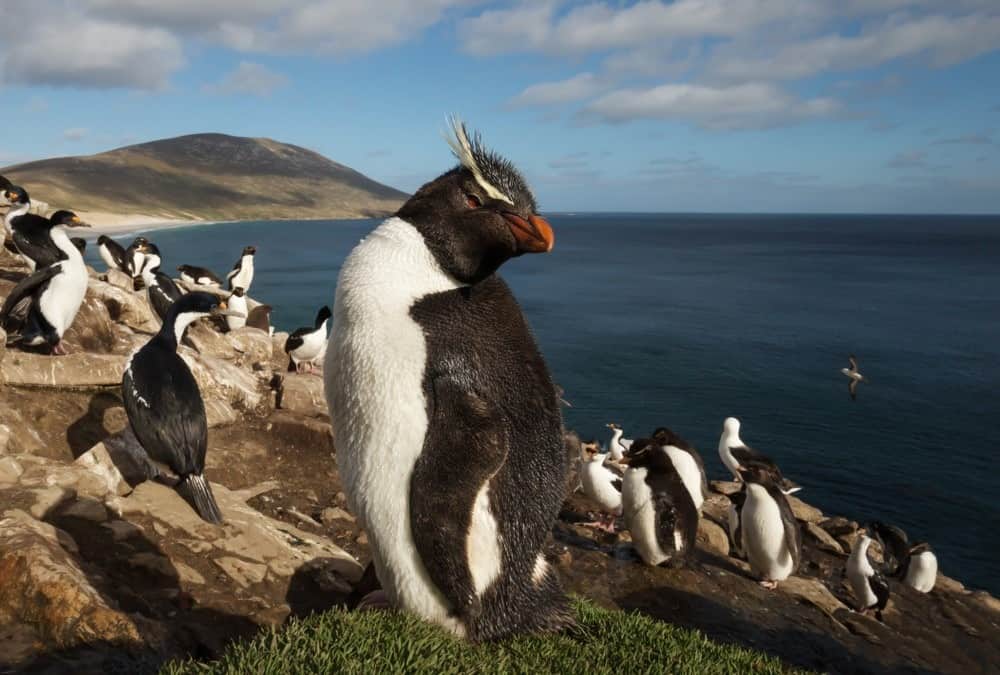
Rockhopper penguins are the smallest species of crested penguins
©Giedriius/Shutterstock.com
All species of these penguins have long yellow and black crest feathers, red eyes, and ruddy, red-colored beak. At slightly less than 2 feet in height, these penguins are a few inches taller than a bowling pin. Males are slightly bigger than females. These penguins weigh about 5.5lbs; they are the smallest species of crested penguins.
These penguins have the traditional black and white coloring of most penguins, with a black tuxedo covering most of their bodies except for their round white bellies. They have bold stripes in the region above their eyes called superciliary stripes. The Northern penguins have more prominent crests than the southern species.
Their chicks are mostly black and gray with black beaks, which turn brighter red and orange as they age. Juvenile penguins look like their adult counterparts, save for patches of grey hair beneath their chin. Some juveniles do not possess superciliary stripes at all.
Behavior
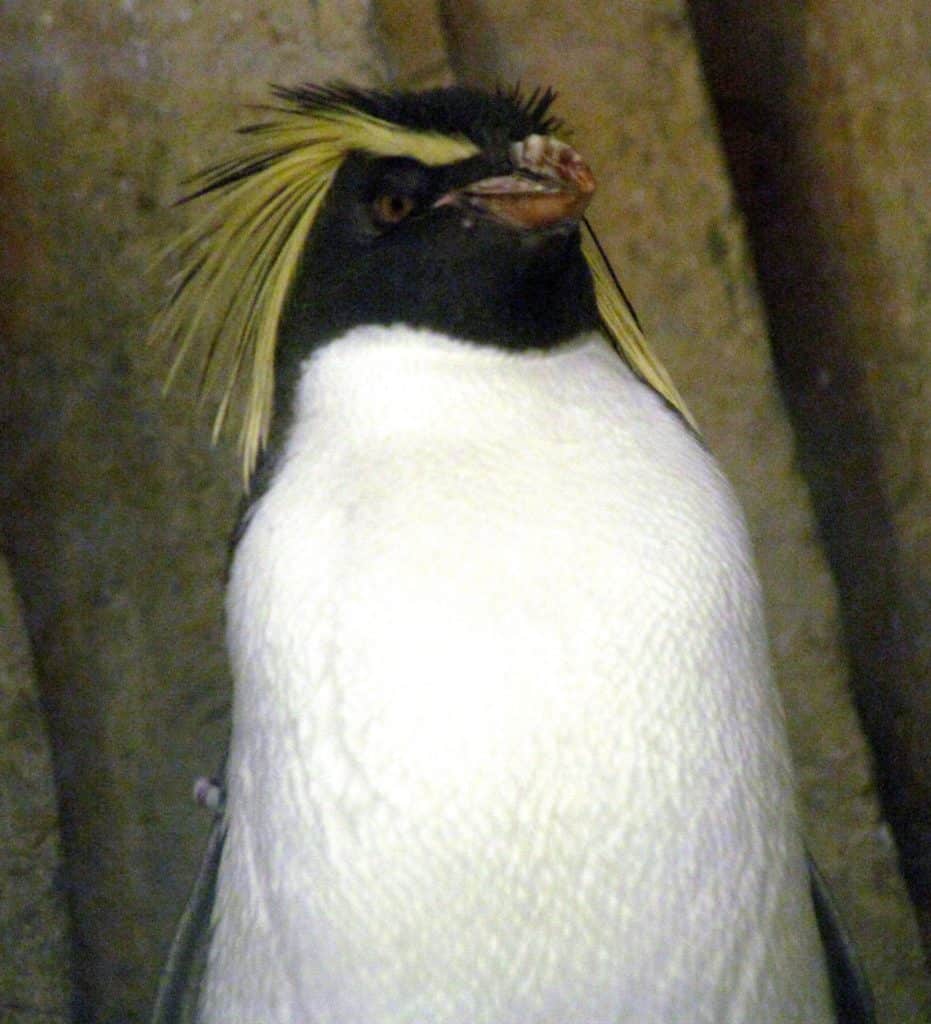
Rockhopper Penguins are excellent swimmers and are capable of diving to depths of 300 feet underwater
©bobistraveling / CC BY 2.0, Flickr – License
These penguins nest along rocky shorelines, hence the name rockhopper penguin. Most penguin species slide around on their bellies, but these penguins prefer to jump among the rocks where they live. They prefer dense patches of grass called tussocks for breeding and nesting.
Like most species of penguins, they are designed for swimming. They use their wings to propel themselves around in shallow water, though they are known to traverse to deeper waters as well. These penguins can dive up to 300ft below the surface and swim around 4mph underwater. When it is time to return to shore, rockhopper penguins can launch themselves out of the water and land on their bellies on the beach.
Habitat
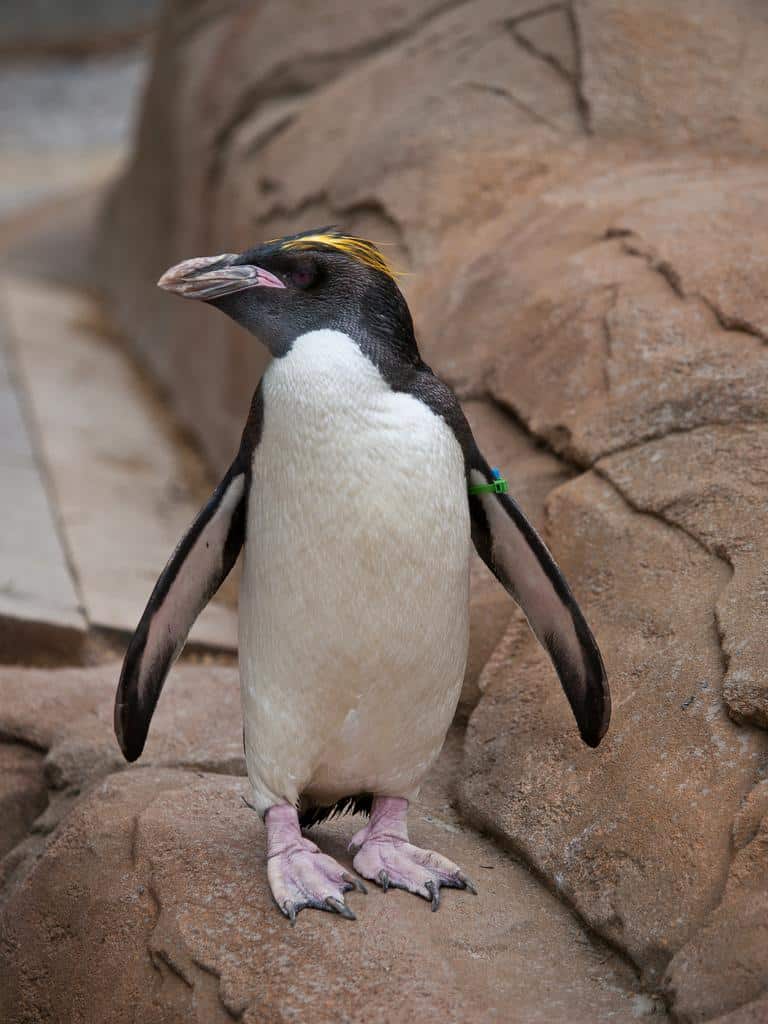
Rockhopper penguins can be found on islands surrounding Antarctica, New Zealand, and South America’s southern tip
©William Warby (wwarby) / CC BY 2.0, Flickr – License
All rockhopper penguins are found on islands surrounding Antarctica and New Zealand, as well as the southern tip of South America. The northern species of this penguin lives on Gough Island and Tristan da Cunha, as well as islands in the Indian ocean. The eastern variety of rockhopper penguin lives on the Auckland Islands and other islands surrounding New Zealand, as well as the southern French territories and Prince Edward Island and Marion islands in South Africa. The southern rockhopper penguin thrives on islands off the southmost coast of Chile and Argentina.
Diet
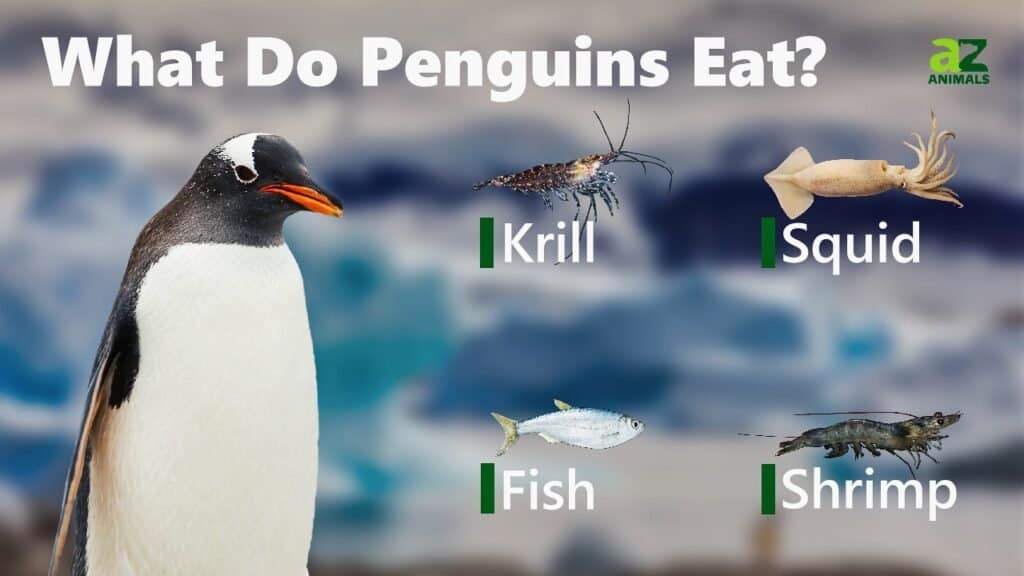
These penguins are carnivores, and their diet mostly consists of krill. They also partake in other small crustaceans as well as squid.
To hunt, these penguins will stay at sea for days at a time, diving deep for krill. They have a layer of fat that keeps them afloat and warm in the cold ocean. Rockhopper penguins, like other species of penguins, have a high density of feathers that overlap and lock out moisture. They have the most feathers of any bird species.
To further aid in hunting, the red eyes of this penguin can adjust so they can see both above and below the surface of the water. They can also sleep while afloat at sea.
Predators and Threats
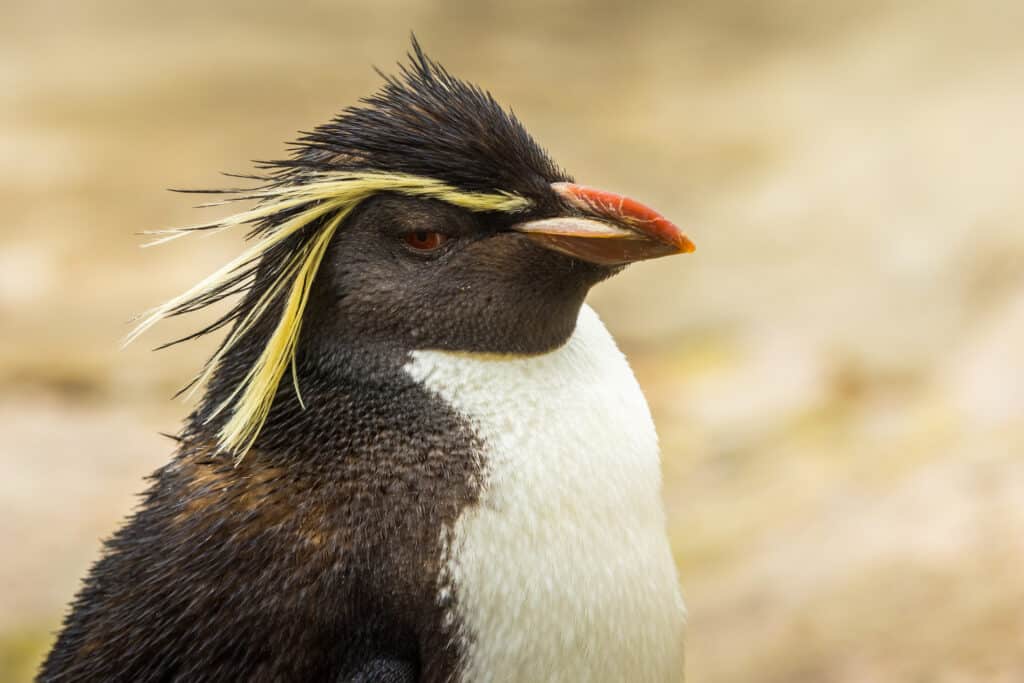
Northern Rockhoppers are hunted by orcas, sharks, and
leopard
seals
©iStock.com/chris2766
These penguins have no land-dwelling predators, but they have much to fear in the sea as well as from other species of birds. They fall prey to orca whales, blue sharks, fur seals, and leopard seals. Though these penguins fiercely defend their young, baby penguins often fall victim to shorebirds like fulmars, skuas, and kelp gulls.
Rockhopper penguins are threatened by humans as well. Their prey suffers from rising global temperatures due to climate change, so the penguins are in decline because they cannot find enough to eat. Overfishing and oil spills both contribute to the shortage of prey. These penguins can also accidentally be caught in fishing nets. Of the three species of these penguins, the northern variety is the most at risk.
Reproduction, Babies, and Lifespan
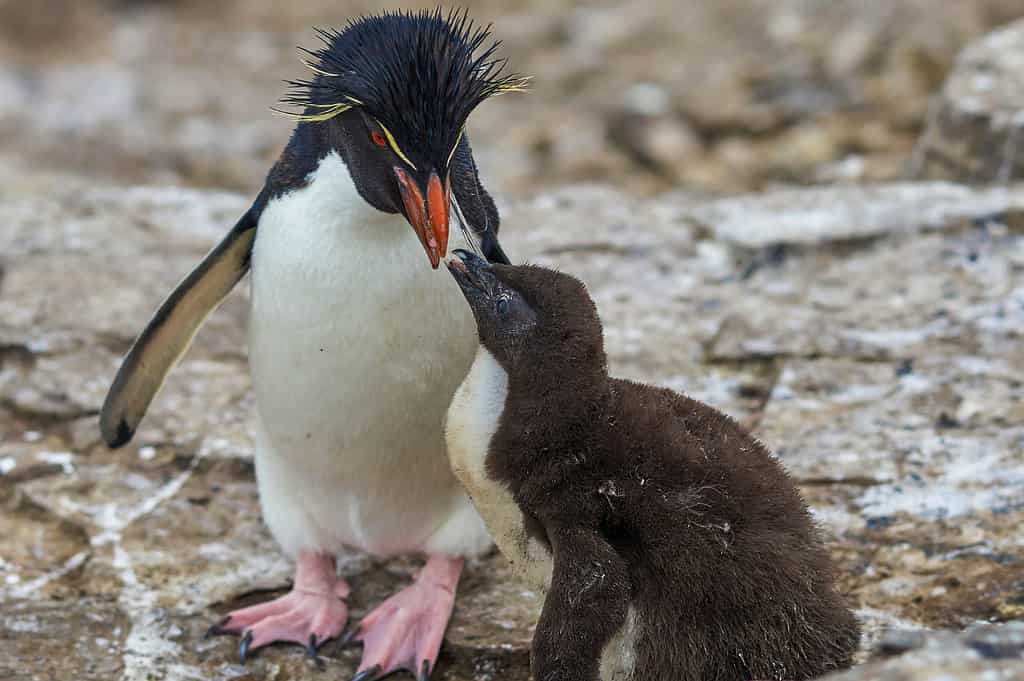
Rockhopper penguins care for their chicks for about one month
©Jeremy Richards/Shutterstock.com – License
The mating season for these penguins is in the early spring to late summer. Penguins arrive onshore, with male penguins typically arriving before the female penguins. Like most penguin species, they mate for life. The male and female pair try to find each other by calling each other. They typically locate the same nesting site they used in previous years. Males begin to breed at ages 4-5, while females start at ages 5-6. These penguins sit on their eggs for about four months. As the penguins nest in their tussocks, the parents take turns incubating the eggs. They are very aggressive and defend their eggs by pecking and squawking at anything that draws near.
Northern rockhopper penguins nest in smaller colonies than their southern counterparts. The size of northern penguin colonies ranges from about 25,000 to 65,000 individuals. Southern penguins, however, nest in colonies of up to 130,000 penguins. This difference might be the reason that southern penguins tend to have two chicks per season. The northern species lay two eggs, but under normal circumstances, only one survives.
The rockhopper penguin parents guard their babies, called chicks until they are about a month old. At this point, the chicks leave the tussocks to join other young penguins in protective groups called crèches. After they are about 66 days old, the penguins are ready to fend for themselves.
These penguins live to be about 10 years old in the wild. However, some of the oldest rockhopper penguins live to be 30 years old. As they age, they are more susceptible to predators.
Population
It is estimated that there are about 1.5 million pairs of these penguins worldwide. The species, especially the northern rockhopper penguin, has seen a decline over the last 30 years. The IUCN’s Red List of Threatened Species has classified the northern penguins as endangered due to rapid population decline, while the southern penguins are listed as “vulnerable.”
In the Zoo
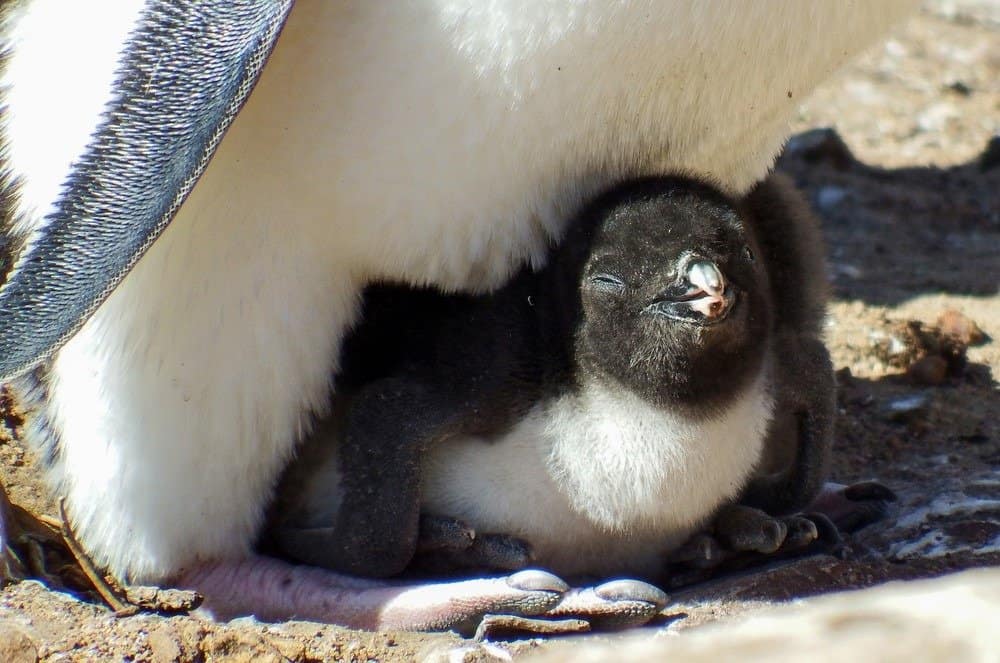
Rockhopper penguins can be found in zoos across the United States
©ValerieVSBN/Shutterstock.com
Currently, there are about 317 of these penguins in zoos across North America. Many prominent zoos feature these penguins, and they are found in many different aquariums as well.
At the Saint Louis Zoo, southern rockhopper penguins are found at their Penguin and Puffin Coast exhibit. The Cincinnati Zoo and Botanical Gardens have raised these penguin chicks. And the Indianapolis Zoo features these penguins in their Oceans exhibit and put on live demonstrations of penguin feeding, where guests can watch the penguins catch food underwater.
View all 114 animals that start with RRockhopper Penguin FAQs (Frequently Asked Questions)
Are rockhopper penguins carnivores, omnivores, or herbivores?
Rockhopper penguins are considered carnivores.
What do rockhopper penguins eat?
They eat mostly krill, as well as other small crustaceans and squid.
Why are they called rockhopper penguins?
Rockhopper penguins thrive along the rocky coasts in the southern hemisphere. They are called rockhoppers because they jump from rock to rock to get around.
How long can a rockhopper penguin stay underwater?
These penguins are excellent divers and can stay underwater for several minutes at a time to chase and catch prey.
How high can a rockhopper penguin jump?
These penguins can survive long jumps or falls as they navigate their rocky homes. The Saint Louis Zoo states that rockhopper penguins can hop about 6 feet off of cliffs and ledges. Their round bodies make it easier for them to withstand tumbling down rocks and exiting the water onto the rocky shore.
Do rockhopper penguins mate for life?
Yes. Like most species of penguins, rockhopper penguins are monogamous and mate once during the mating season. The penguins usually continue to seek the same partner for the rest of their lives.
Why are rockhopper penguins endangered?
Rockhopper penguins are endangered because they are quickly running out of food sources. Overfishing and global warming are causing a shortage in the types of crustaceans and krill that penguins like to eat. Oil spills are also affecting the penguins’ food sources and habitat.
What is the lifespan of a Rockhopper Penguin?
Rockhopper Penguins can live for 15 to 20 years.
Thank you for reading! Have some feedback for us? Contact the AZ Animals editorial team.
Sources
- David Burnie, Dorling Kindersley (2011) Animal, The Definitive Visual Guide To The World's Wildlife
- Tom Jackson, Lorenz Books (2007) The World Encyclopedia Of Animals
- David Burnie, Kingfisher (2011) The Kingfisher Animal Encyclopedia
- Richard Mackay, University of California Press (2009) The Atlas Of Endangered Species
- David Burnie, Dorling Kindersley (2008) Illustrated Encyclopedia Of Animals
- Dorling Kindersley (2006) Dorling Kindersley Encyclopedia Of Animals
- Christopher Perrins, Oxford University Press (2009) The Encyclopedia Of Birds
- National Geographic, Available here: https://www.nationalgeographic.com/animals/birds/s/southern-rockhopper-penguin/#close
- New England Acquarium, Available here: http://penguins.neaq.org/2010/07/penguin-pals-eudyptes-ii-and-chrysocome.html
- Britannica, Available here: https://www.britannica.com/animal/rockhopper-penguin#ref1122553
- Oceanwide Expeditions, Available here: https://oceanwide-expeditions.com/to-do/wildlife/rockhopper-penguin
- Center for Biological Diversity, Available here: https://www.biologicaldiversity.org/species/birds/penguins/rockhopper_penguins.html
- Saint Louis Zoo, Available here: https://www.stlzoo.org/animals/abouttheanimals/birds/penguins/rockhopperpenguin

